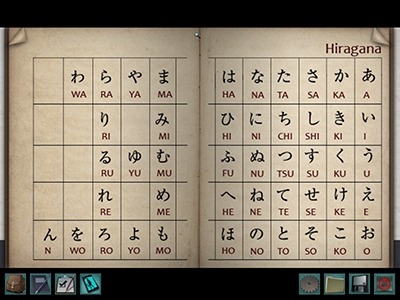

No matter what point in the game, I always felt well oriented and familiar with my surroundings. The garden is complete with lanterns and a cherry blossom tree, and light reflects realistically off of the dark surface of the water in the pond. While the locales seen as you navigate through the train station or wander the halls of the ryokan are all sharp, the scene-stealer is absolutely the gorgeous Japanese garden. The clues lead players through a number of spots in Kyoto, Japan.

Each room is incredibly detailed and has a great sense of depth. What really stands out in the game is how clearly defined the spaces are. The movements in Shadow at the Water’s Edge are both more fluid and natural the characters have distinct mannerisms and postures, rendering them more realistic. Characters are more life-like than HerInteractive’s last Nancy Drew game for Mac, Visually, Shadow at the Water’s Edge is quite appealing. The story unfolds nicely, and each clue offers its own piece of exposition, so there’s no need for lagging explanations at the start. While all of the characters seem to have their own take on the rumors that the inn is haunted, several encounters with things that go bump in the night lead Nancy to embark on one of her full-fledged investigations. However, immediately upon arrival, Nancy gets wind of some strange goings-on in the traditional Japanese ryokan she’s staying at. I'm sorry if this is confusing I tried to explain what I could.The game begins when the well-loved teen detective journeys abroad to relax, visit some friends, and teach English in Japan. If you know even just a couple of the squares of the leftmost edge, for example, that will help you for the horizontal axis-you know the first number of squares to fill in! This works for ALL edges, so see how those are. Fill those in, which in that case, you know ten of the squares are filled in for sure.Īlways look at the edges of the puzzle, too. For example, on a 20x20 square, if one row has a "15," you may not know exactly where it starts and ends, but there are some squares that are filled in no matter what combination you try. Look first for longer numbers and fill in squares that it must cover. Every time you fill in or X out a square, you should feel confident that it must be that way. It is a puzzle, firstmost, and very rarely should you ever have to guess how a row and column go. This game made me fall in love with nonograms, so hopefully some advice will help. I have no idea if you're still stuck, but I'll give my two cents.


 0 kommentar(er)
0 kommentar(er)
